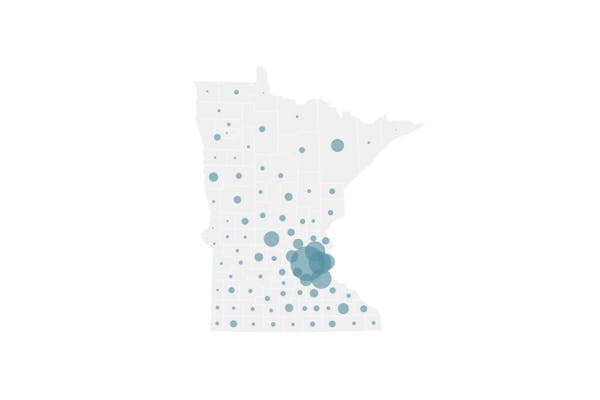The number of coronavirus cases among children has soared to unprecedented levels, with unknown implications, the American Academy of Pediatrics announced Monday.
By Oct. 29, more than 853,000 children had tested positive for COVID-19 since the onset of the pandemic, the academy said. This included nearly 200,000 new cases in children during October alone — 61,000 of them during the last week of that month, larger than any previous week during the eight-month pandemic.
"This is a stark reminder of the impact this pandemic is having on everyone — including our children and adolescents," said AAP President Dr. Sally Goza in a statement. "This virus is highly contagious, and as we see spikes in many communities, children are more likely to be infected, too."
Children on the whole don't seem to be affected as much as more vulnerable populations, but they can be vectors of infection to their elders and those with underlying conditions who may get more severely ill.
And children do get ill, and even die, as the death of a 13-year-old eighth-grader in Missouri over the weekend attests.
Even if they don't get sick or show symptoms, children are being affected by other aspects of the pandemic, Goza said.
"Not only are children feeling the direct effects of the virus and becoming ill, but the pandemic has transformed their lives at critical stages of development and education," she said. "I'm very concerned about the long-term harms that children may suffer, particularly Black and Hispanic children, who are suffering a higher number of infections. This includes not only children who test positive for the virus, but everyone in these communities who are suffering disproportionate emotional and mental health harms."
Eighteen states have broken daily records for new infections in the past week overall, CBS News reported, with hospitalizations up in 43 states. The U.S. has seen more than 9.2 million cases of coronavirus since the pandemic began earlier this year. More than 231,000 people have died.
The numbers of infected children are a microcosm of the situation at large, experts said.
"These numbers reflect a disturbing increase in cases throughout most of the United States in all populations, especially among young adults," said Dr. Yvonne Maldonado, chair of the AAP Committee on Infectious Diseases, of the data in the report. "We are entering a heightened wave of infections around the country. We would encourage family holiday gatherings to be avoided if possible, especially if there are high risk individuals in the household."
Goza urged everyone to take precautions and not to view the virus lightly.
"We can help protect everyone in our communities by keeping our physical distance, wearing masks, and following other recommendations from our doctors and public health experts," she said.

Want to share info with the Star Tribune? How to do it securely

'Safe recovery sites' would offer syringes, naloxone and more to people using drugs. The plan could be in peril.
New Minnesota GOP leaders seek peace with party's anti-establishment wing

Who is Republican Lisa Demuth, Minnesota's first House speaker of color?

